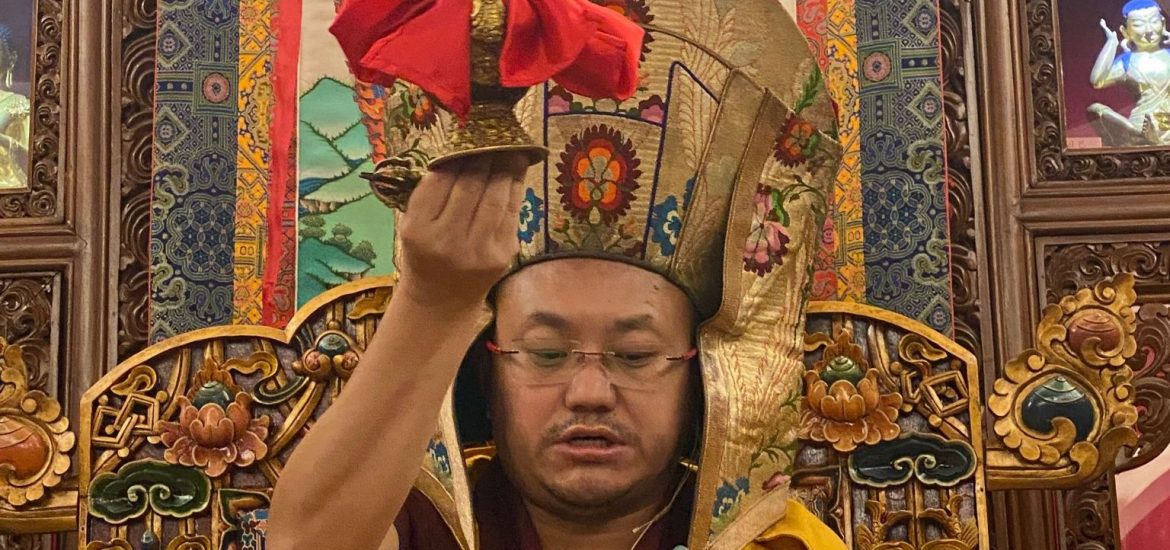It was a night to remember among a week of holy rituals dedicated to the Vajrayana deities. It began with a puja devoted to Padmasambhava on 18 July and concluded with one to Namtose on the 22nd. The ceremonies were led by the 2nd Gyalpo Rinpoche, a bright-eyed master of pujas and other essential rituals, from empowerments to consecrations. His entourage, composed of Nepali monastics that reside either in Hong Kong or Nepal, were in town for this puja series at the Karma Samten Ling (H.K.) Buddhist Centre.
Born in 1978, the 2nd Gyalpo Rinpoche’s previous incarnation was born in 1913 in the picturesque town of Manang, western Nepal. Manang, despite its tiny population of around 2,200, is rapidly becoming a popular tourist destination on the Himalayan circuit thanks to its many scenic sites, including the ethereal Gangapurna Lake. The current Gyalpo Rinpoche was recognized by many accomplished masters, including Tai Situ Rinpoche (one of the oldest lineages of the Karma Kagyu).
The Karma Samten Ling transmission would eventually make its way to Kathmandu, when Gyalpo Rinpoche founded Karma Samten Ling Monastery in 1990. “Karma Samten Ling” replaced an earlier name and was chosen by Gyalpo Rinpoche in memory of the 16th Karmapa and the 3rd Jamgon Kongtrul. Since then, all Buddhist centers under his jurisdiction have been called Karma Samten Ling.
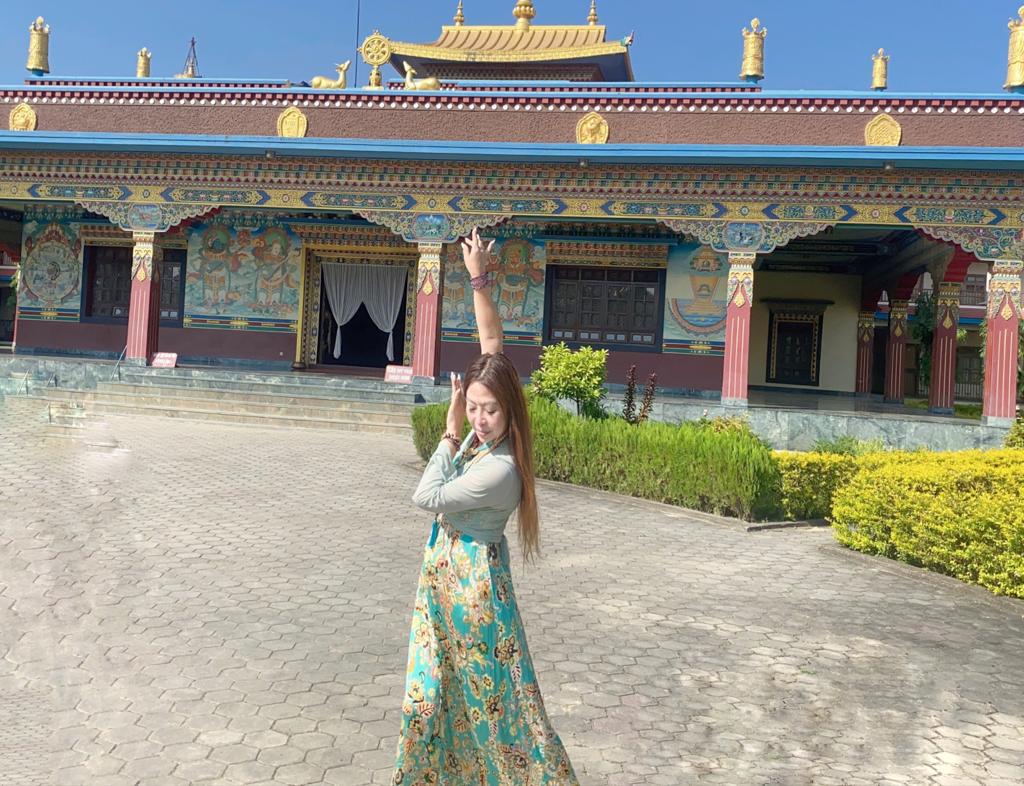
Gyalpo Rinpoche has had a long relationship with Hong Kong, starting with the decision to found a center in the city after he and Khenpo Kunga made a visit in 1998. The auspicious fruit would ripen a few years later, when Khenpo Kunga helped to found Karma Samten Ling (H.K.) Buddhist Centre in 2002–04. Now on Portland Street, Mong Kok, Karma Samten Ling Hong Kong enjoys the distinction of being one of the earliest Vajrayana practice centers in the Asian hub.
Rebecca Wong, mystic of art, brought me to the Hong Kong center for the night of Kurükulle on the 20th, one of her core tantric deities in practice and painting. Speaking as a devotee of Gyalpo Rinpoche, she said: “It was so special for me to be able to participate in successive pujas of deities I have devoted myself to: Kurükulle and Namtose represent a powerful presence in my spiritual practice.” Kurükulle, in particular, is a fiery, charismatic dancer in her art, painted in gold with cosmic fire emanating from her endearing figure.
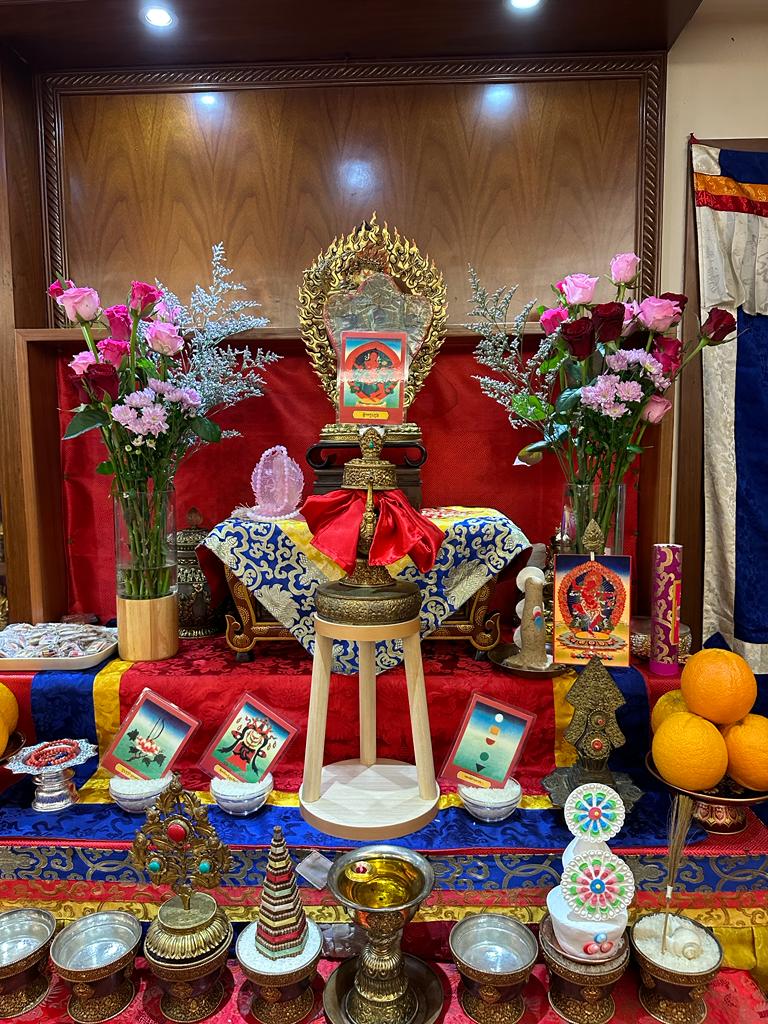
Kurükulle’s puja, like the others, included an empowerment, which I found to be powerfully resonant and transformative. Rebecca’s translucent sculpture of the semi-wrathful goddess, mounted on the shrine alongside the other ritual implementations, bolstered the divinity’s vibrations that Rinpoche was channeling.
The next day, she hosted Rinpoche to a joyous and auspicious lunch, where he performed a consecration of her dwelling. Then she and her circle of friends, calling in from Shanghai as well as being present in person, discussed with Rinpoche the idea of assisting in funding his projects in Nepal. Key among these is the Karma Samten Ling Nunnery in Pharping, near Kathmandu. About 45 female monastics reside here, many of them coming from disadvantaged backgrounds: girls from India, homeless orphans, or those born in remote Himalayan villages.
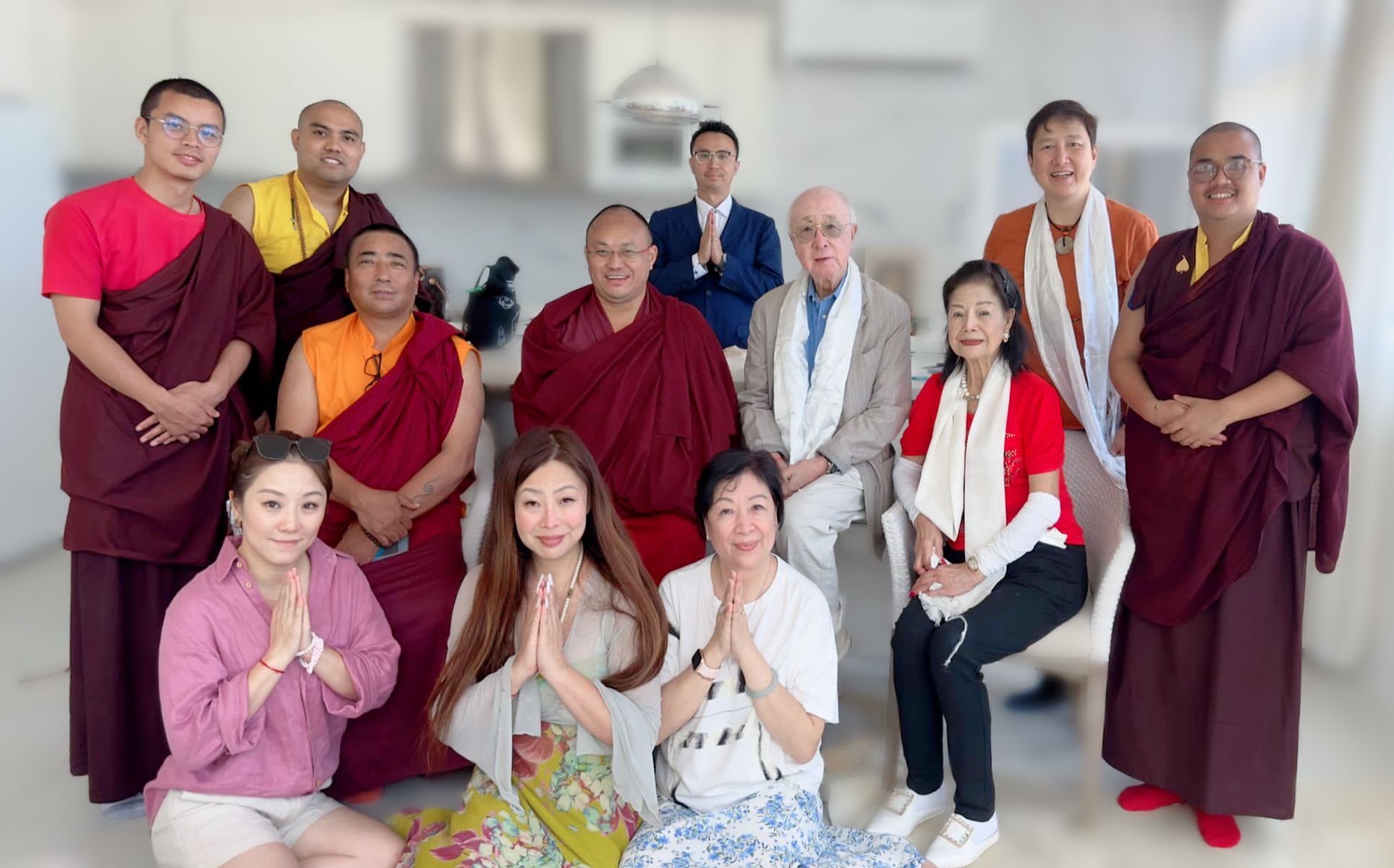
“Every year, 10–12,000 women are trafficked into India from Nepal,” said Rinpoche. “Perhaps it is my village background – I consider myself a son of Manang – that I felt a deep sense of urgency in doing something to change what it means to live in Nepal as a woman.”
He identifies education as the key for generational reform, and according to this spirit, the nunnery provides girls with 15 years of free education, complete with board and lodging, feminine hygiene and medical care, and other necessities and benefits. This comprehensive education offers the female students the opportunity to become nuns, erudite in the Dharma and empowered personally.
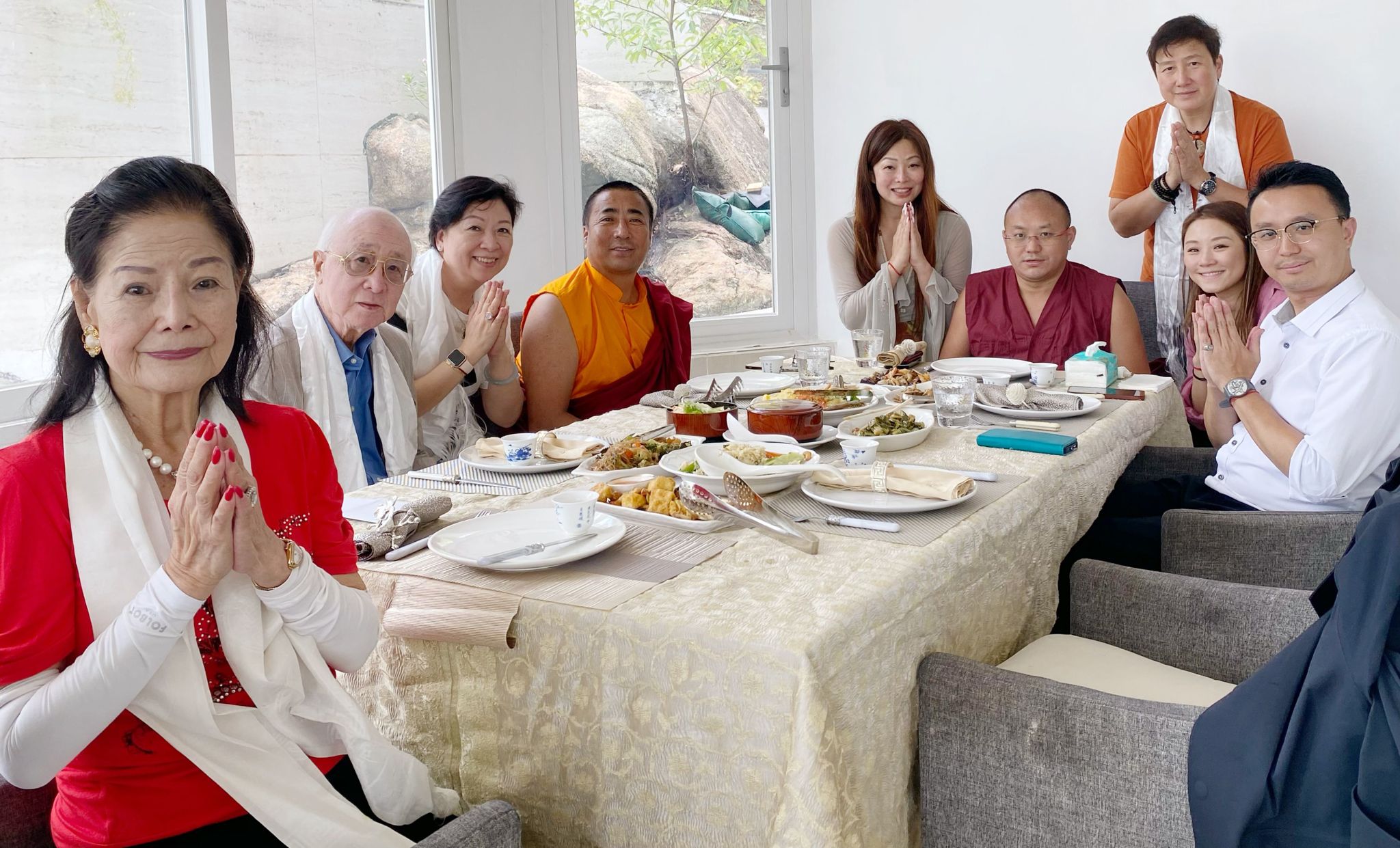
His thoughts on society’s rapid changes and Nepal’s recent struggles, from the 2015 Kathmandu earthquake to the pandemic, are timeless yet progressive: “In the case of disasters like earthquakes and pandemics, we should accept the fact of impermanence, while resolving to take compassionate action like bodhisattvas,” he said. “When you ask me about the Internet and the dominance of social media, I actually take a more positive view of the Internet as a necessary step for bodhisattvas to connect and build links with the entire world. It can be a good accessory if used with right intention.”
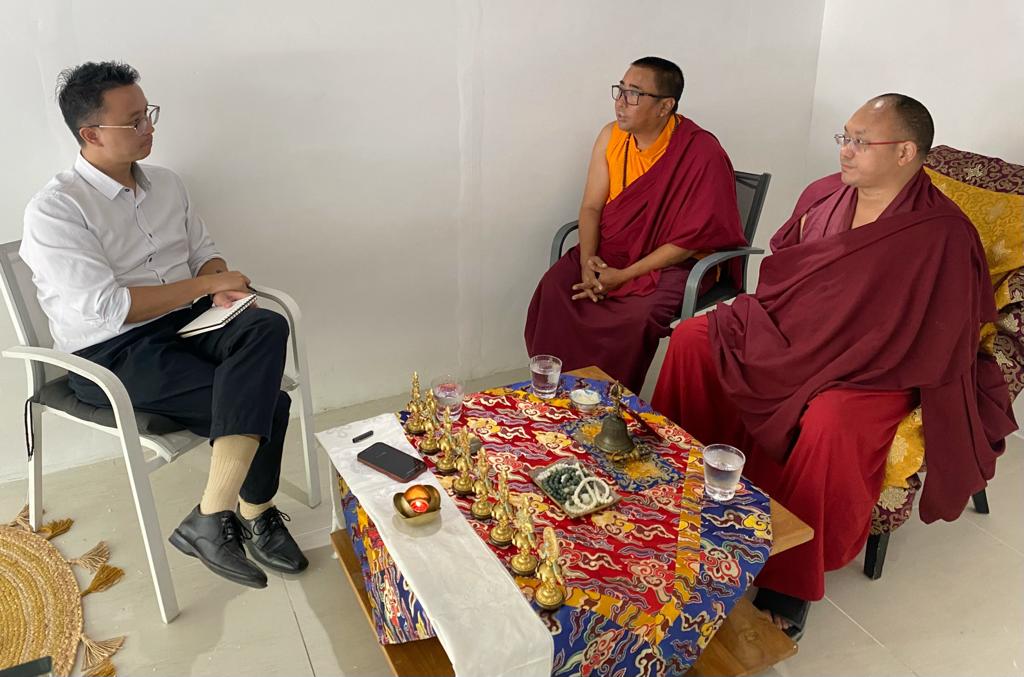
The passing of the late Thrangu Rinpoche has him thinking about what distinguished him as a teacher, and what makes a good Buddhist leader. “Everything hinges on motivation,” he said, “and motivation is only pure if it is full of love and compassion. Many religious leaders are more interested in the form of religion, in its performative aspects. The essence of religion goes beyond behavior and outer appearances.” That is why, he notes, Thrangu Rinpoche was so beloved. “He was one of the most compassionate and accomplished masters ever, and he was the Gyalwang Karmapa’s master.”
Wherever he goes, Gyalpo Rinpoche takes with him the unadorned yet majestic spirit of Manang: sweeping, all-embracing, touching earth and sky. Women see in him the authentic spirit of advocacy and reform: one that Rebecca and her inner circle are committed to assisting. From Manang to Hong Kong and now back again: from bustling skyscrapers to the open heavens. Truly a female bodhisattva’s journey.
See more
Karma Samten Ling (H.K.) Buddhist Centre (Chinese only)
法爾賓噶瑪禪揚女尼寺 (Chinese only)
Related blog posts from BDG
Yongzheng’s Yuanmingyuan: The Dharma Dimensions of the Old Summer Palace
Rebecca Wong’s Dreamscapes of Art, Archetypes, and Ascension


